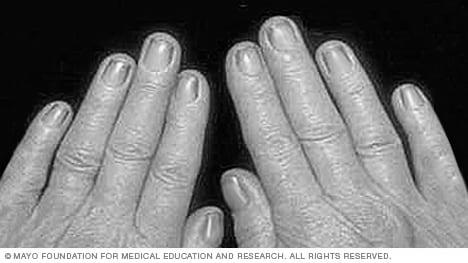- What is Yellow Nail Syndrome?
- What causes pain under your fingernail?
- What causes a spoon nail, and how do you cure them
- How do I fix a bump and dent in my thumbnail?
- What causes someone to have orange fingernails?
- Peeling skin below fingernails. What could be the
- Why do doctors push on your fingernails?
- How to treat a throbbing pain under my fingernail?
- Why Do I Get Black Lines at the Tips of My Gel-Manicured Nails?
- Why do nails become black?
- How do I get rid of nail fungus?
- What is the best way to get rid of toenail fungus?
- How do I cure a fungal nail in my hand?
- Can toenail fungus spread to fingernails?
- How to treat nailbed infection?
- How do I cure fungal infection of the nail on a
- What are the natural treatments for nail fungus?
What is Yellow Nail Syndrome?
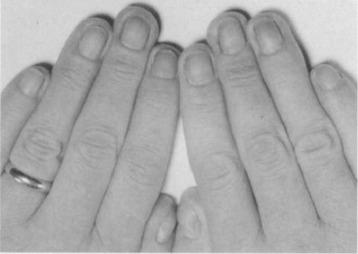
What is yellow nail syndrome? Is a condition characterized by a yellow or orange fingernail? A person with yellow nail syndrome may have other conditions affecting the same area. For example, some individuals may have chronic respiratory infections such as sinus infections or bronchitis. In rare cases, yellow nails can occur in combination with lymphedema, an underlying disorder that causes swelling in one or both legs.
What causes pain under your fingernail?
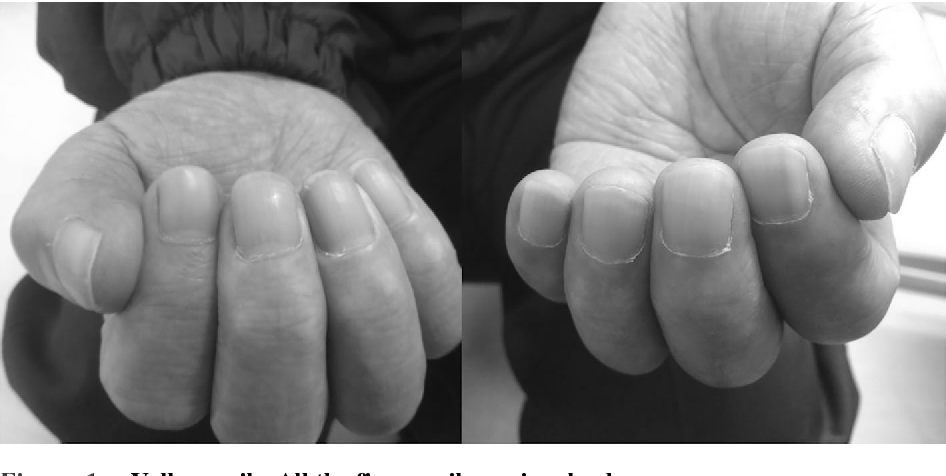
The skin under your fingernail is filled with nerve endings and blood vessels, making it a common source of pain. The sensation that you feel when pressing your fingernail can be caused by several factors, including an underlying health condition and the area’s sensitivity. Board-certified dermatologist Ife J. Rodney, founder and president of Eternal Dermatology Aesthetics and professor of dermatology at Howard University, says that pain in the nail can be of varying degrees, depending on the severity of the underlying problem and the location.
There are two common causes of pain under your fingernail: paronychia and bacterial infection. Paronychia is an infection in the skin where the nail meets the skin. On the other hand, Fungus is more likely to affect people with wet hands.
What causes a spoon nail, and how do you cure them
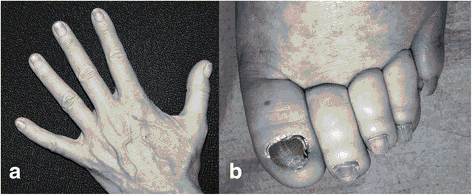
These nail defects indicate a condition known as koilonychia. As their name suggests, spoon nails have a deep depression in the center where water may accumulate. Often, the state is a symptom of another illness, such as iron deficiency, malnutrition, or an autoimmune disorder. After treatment, spoon nails can return to their standard shape.
A condition known as koilonychia refers to soft nails with an indentation on the nail bed. This indentation is deep enough to hold a drop of water. Koilonychia often occurs in association with another disorder, such as subungual thickening. It may be caused by iron deficiency due to poor nutrition, bowel or heart condition disease, or a disorder called hemochromatosis, in which the body absorbs too much iron.
While a specific underlying condition may cause the symptoms of yellow nail syndrome, vitamin E treatment is most effective for treating the associated disease. In the case of respiratory infections, patients may receive antibiotics or have a pleural effusion surgically removed. Special bandages, elastic compression garments, or manual lymph drainage may help alleviate the condition of lymphedema. But the most effective method is to consult a doctor and follow his advice.
How do I fix a bump and dent in my thumbnail?
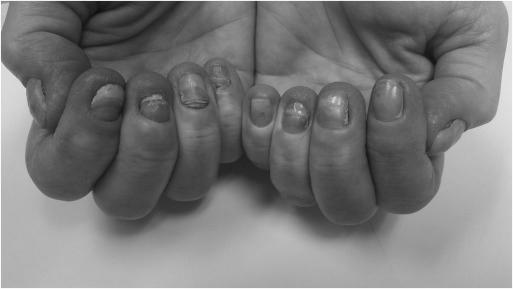
Easily. You can do it in the bathroom with a closed door. Get a ball-peen hammer and hold it down over the bump. Please give it a good whack to remove any debris. Let the nail cool before continuing. Then pull the nail free from the nail bed. After removing the pin, you can apply nail polish or a nail file to smoothen it out.
What causes someone to have orange fingernails?
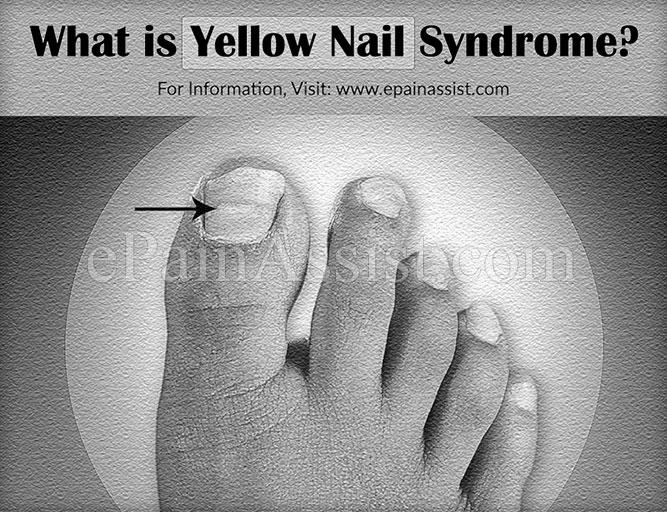
Why do some people have orange fingernails? Many times, these colors are a result of undernutrition. However, this can take months to show up in your fingernails. In this case, you may need supplemental vitamins to cure your orange fingernails. Other times, your orange fingernails are simply due to a fungal infection. If you have the latter, try to drink baking soda water.
Other causes of orange fingernails are vitamin deficiencies and specific health conditions. by going to the doctor. However, if you have no idea what’s causing your orange fingernails, you can try a home remedy. For instance, lemon and baking soda and tea tree oil can help you get rid of your orange fingernails. To use either of these home remedies, mix the two ingredients and apply them to the affected area. After a few minutes, rinse off the mixture with fresh water.
Another common cause of discolored fingernails is trauma to the nail plate or skin. The trauma can make the skin more conducive to fungal infection, spreading to the rest of your fingers. In addition to keeping your nails clean, you should also take care of your shoes and boots because some fungi can remain viable for months in your shoes and boots. Keeping the nail plate clean is essential, even after applying nail polish.
Peeling skin below fingernails. What could be the
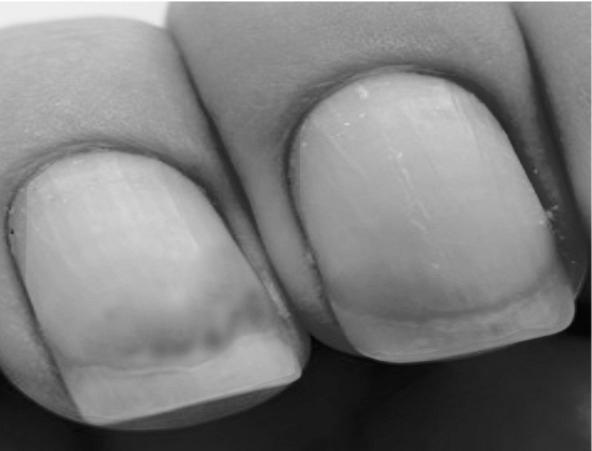
Peeling skin beneath the fingernails can be a sign of various conditions. Among these are psoriasis, eczema, and dyshidrosis. These disorders affect the life cycle of skin cells, resulting in a rapid buildup of skin cells. Symptoms of dyshidrosis include fluid-filled blisters on the sides of the fingers. However, the exact cause of peeling skin below fingernails is unclear.
In a study involving three siblings, Lambert EM and Toussirot EG found that topical vitamin E treatment improved the symptoms of yellow nail syndrome. However, the treatment of yellow nail syndrome is not recommended for this condition unless it is associated with a diagnosis of cancer or rheumatoid arthritis. In addition to topical therapy, home remedies for yellow nail syndrome can include using elastic compression garments.
Another possible cause of peeling skin below the fingernails is chronic skin infections. Excessive hand washing can damage the skin’s lipid barrier, causing the soap to enter the more sensitive layers. Other causes of peeling skin beneath the fingernails include over-drying or exposure to certain chemicals or materials. Exposure to harsh chemicals, especially nail polish, is another common factor. Moreover, skin disorders such as psoriasis may cause the skin to peel around the fingers. Maids and beauticians are more likely to develop peeling skin below their fingernails. Dry climate is another factor causing peeling skin beneath the fingernails.
Why do doctors push on your fingernails?
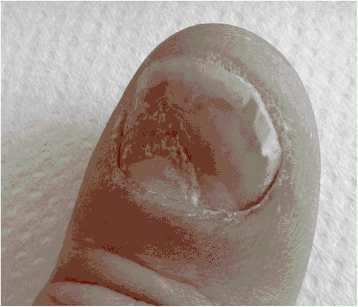
Doctors sometimes push on your fingernails for various reasons, including the fact that they can tell you a lot about your health. For example, if you have a nail infection, doctors may want to see your nail bed. It is the part of your body furthest from the heart, so they want to measure how much blood flows and how much hydration is present in the finger. The doctor may also want to see if there is any loss of sensation in your fingers.
Doctors also use pressing on the nails to monitor blood circulation. If the nails change color or size, they may be a symptom of an underlying medical condition. Can include lung disease, anemia, and skin disorders. Your doctor may also use the tests to diagnose other conditions. Getting a professional’s opinion on your fingernails is the best way to ensure your health.
How to treat a throbbing pain under my fingernail?
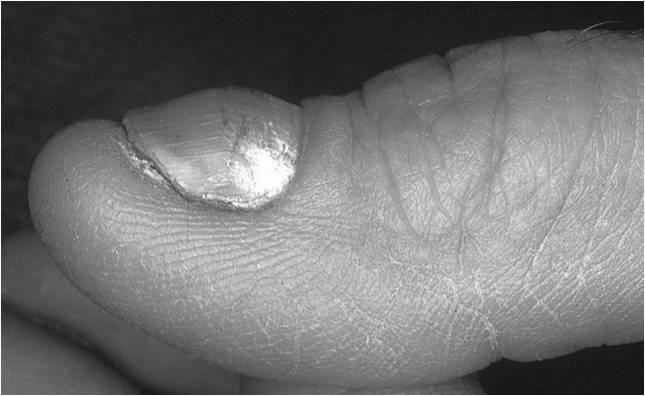
Yellow nails can result from many diseases, including rheumatoid arthritis and lung disease. Yellow nails are also a sign of an infection that requires immediate medical attention. Symptoms of yellow nail syndrome can include lines running the fingernail length or deep grooves in the nail matrix. The nail may also be missing, which is known as onychomadesis.
A throbbing pain under a fingernail caused by yellow nail syndrome should be treated by your doctor immediately. You should seek medical attention if the pain persists for several days and you notice a fever or chills. If you notice swelling in the finger, see your doctor to rule out an infection. If you have an ingrown fingernail, soaking your feet in warm salt water can relieve the pain and allow the nail to grow out again. If you have diabetes or a weak immune system, you should see your doctor immediately.
In the case of yellow nail syndrome, the treatment will depend on the underlying condition. Treatment for the nail-related symptoms is vitamin E. Treatment for respiratory infections may include antibiotics or surgical procedures to drain excess fluid. Manual lymph drainage or special bandages are also effective options for treating yellow nail syndrome. And, if you’re concerned about the cause of your pain, you can visit a dermatologist.
Why Do I Get Black Lines at the Tips of My Gel-Manicured Nails?

If you’re one of the millions of people who get black lines on their gel-manicured nails, you’ve probably wondered: Why do they happen? And how do you get rid of them? Listed below are a few of the most common reasons why black lines appear on your nails, including:
Why do nails become black?
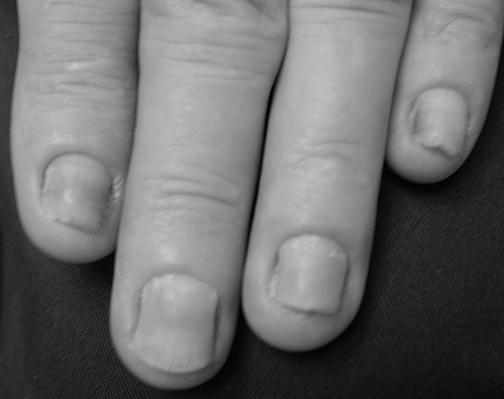
If you have had a gel manicure and wonder why they have turned black, you’re not alone. Many women enjoy gel manicures for their long-lasting beauty. They may even be less likely to chip. However, an expert has warned against them, claiming the UV lamps used to cure them can cause problems with your nails and cause skin cancer. Adigun’s study was presented at the American Academy of Dermatology meeting in Miami Beach.
One of the most common causes of darkened nails is dirt getting trapped between the gel overlay and the pin. It could also be a sign of Fungus or diluted gel. Regardless of the cause, it’s essential to seek medical care if you notice a sudden change in nail color. Choosing a high-quality nail polish is crucial in preventing this condition and restoring your nails to their original beauty.
How do I get rid of nail fungus?
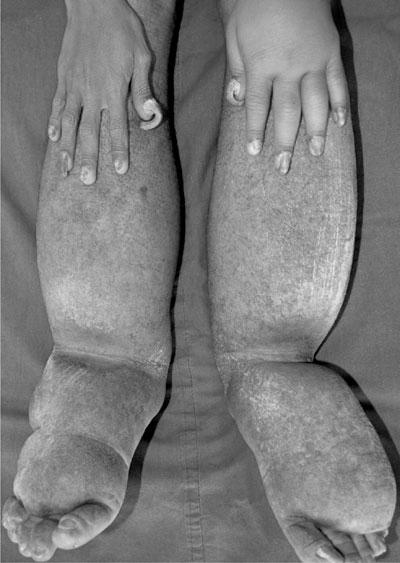
If you are suffering from nail fungus on the tips of your gel-manicured nails, you may have to resort to prescription medication. Tea tree oil and other essential oils are popular alternative remedies for nail fungus. They both have potent antifungal and antibacterial properties. Using lemon juice as a topical treatment can help to eradicate this problem.
If you notice that your nail is getting thick and complex, it is likely to be infected by fungi. It might require filing the nails. However, it’s easy to file them down with clippers. Sanding them down should be easier after you’ve trimmed them. Another popular treatment for nail fungus is tea tree oil. Tea tree oil has antifungal, antibacterial, and antiseptic properties. It’s readily available in products for treating nail fungus.
Crushed garlic is another effective remedy for treating nail fungus. You can mix it with a carrier oil, such as olive oil, and apply it to the affected nail. Apply it with a bandage to ensure its effectiveness. Remember to follow this routine regularly for several weeks. Another topical remedy for nail fungus is lemon juice. Lemon juice contains citric acid, which is antifungal.
What is the best way to get rid of toenail fungus?

One of the most effective home remedies for toenail fungus is to apply olive leaf extract, a potent antifungal, to your feet. Olive leaves have been used in medicine for thousands of years, and the section is a natural antibiotic that fights off fungi and boosts the immune system. You can find olive leaf extract online in liquid or pill form. If these home remedies do not work for you, consult a podiatrist. The disease is very stubborn and will not go away on its own; you will have to apply the home remedy for a long time until a new nail grows out.
Another common home remedy for toenail fungus is garlic. Garlic has strong antifungal properties, making it a top choice for a toenail fungus treatment. Apply the paste to the infected nail for 20-30 minutes each day for a week to see results. However, you should avoid applying garlic to your nails if you have sensitive skin.
How do I cure a fungal nail in my hand?
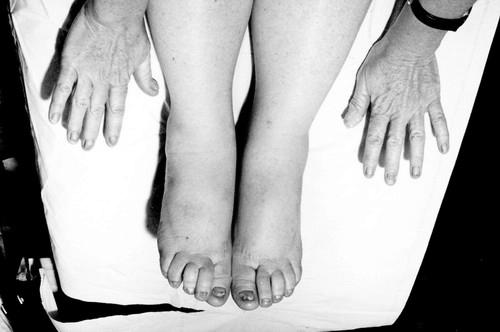
If you’re asking yourself, “How to cure a fungal nail in my hands?” then you’re not alone. Fungal infections affect many people and are often difficult to treat. It’s not uncommon to get exposed to it and be susceptible to reinfection in your surroundings. Fungal nails are unsightly and painful, but they can also be caused by other medical conditions, such as diabetes or vascular disease.
A fungal infection typically begins as a white spot under the nail and can progress to the entire pin or a white or yellow patch. The nail may become hard to trim and crumble or curl up from the nail bed. When the infection is severe, the pin may even come off ultimately. As the disease progresses, the affected area may become inflamed or scaly. If you’ve been experiencing these symptoms, you should see a doctor for a proper diagnosis. They will likely recommend a course of treatment based on the findings. Antifungal medicines effectively cure fungal infections and can be applied the same way as nail polish.
Treatment for fungal nail infection depends on the severity of the disease. If the condition is severe, your doctor may recommend removing the infected nail, which may require surgery. The infected nail may re-infect if left untreated, so it’s essential to use antifungal medicine regularly. If you can’t afford oral antifungal therapy, you can try applying a topical solution. Although topical medications can relieve the symptoms of fungal nail infection, they can’t cure it completely. You should avoid walking barefoot in public areas and don’t share your items.
Can toenail fungus spread to fingernails?
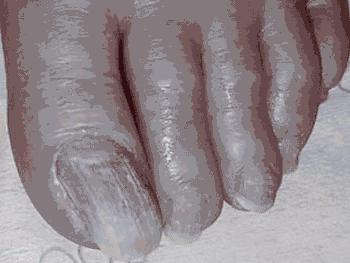
If you have toenail fungus, you may wonder whether it can spread to fingernails. While it is not likely, toenail fungus can spread to fingernails. Symptoms of toenail fungus include changes in color and quality. It can be treated by daily cleansing and filing, but that’s unlikely to permanently get rid of the Fungus.
The first step is to change your footwear. If possible, wear flip-flops or sandals and avoid using shared shoes and showers. Change your socks and shoes regularly. Clipping your toenails straight across is also recommended. Wear socks made of synthetic fiber, which wick moisture away faster than cotton. It will help prevent fungus from growing. Another step to take is to use a nail clipper that’s clean before each use.
. If you’re a frequent hand-washer, you’re also prone to getting the disease. Constant handwashing damages the protective skin covering the nail’s base, which fungi can enter. You should also avoid wearing sweaty socks as they may promote the spread of the infection.
How to treat nailbed infection?
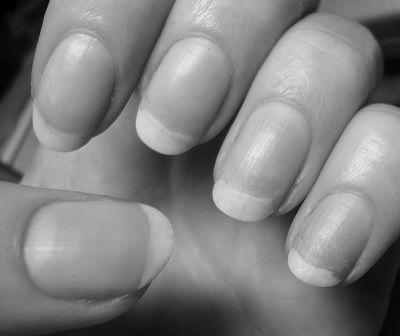
In many cases, onycholysis is temporary and can be resolved with appropriate treatments. Occasionally, you may experience minor changes to the nail plate, such as differently colored ridges and lines. These changes are not painful but may increase the risk of infection.
Fortunately, there are several ways to treat nail fungus. A topical treatment using oregano oil may help. This oil contains antifungal properties and is effective against fungi and bacteria. If you don’t have access to natural products, you can also apply Listerine mouthwash. This solution should provide relief for nail fungal infections but should only be used under the direction of a healthcare professional.
Acrylic nails are prone to causing nail fold infections. The adhesive between the acrylic material and the pin is stronger than the nail plate’s natural bond. It May result in traumatic onycholysis when the extension is levered off the nail plate, or a sharp instrument is used to clean underneath the nails. Another risk factor is the artificial nails themselves. Since they reduce the evaporation rate, the nails become more prone to infection.
How do I cure fungal infection of the nail on a
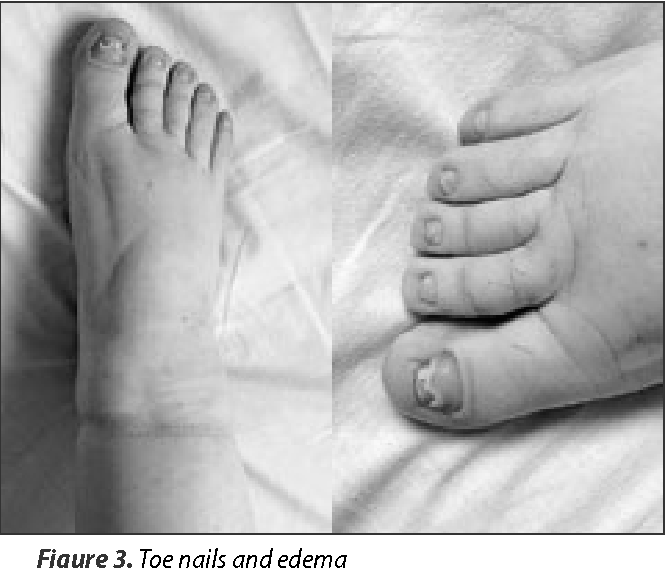
The first step in curing fungal infection of the nail on your gel manicure is to reduce or remove the gel polish and gel manicure. If you don’t want to remove the polish right away, you can use an over-the-counter antifungal cream. Or you can file off the thick nails so the antifungal cream can get to the problem. If you’re not comfortable filing off the thick nails, you can seek a doctor’s advice.
If you’re using a fake nail, it’s essential to clean and dry your nails properly. The longer your nails are, the easier they are to trap moisture underneath. Getting rid of fungal infection on a fake nail is easier said than done. Here are some tips to follow:
What are the natural treatments for nail fungus?
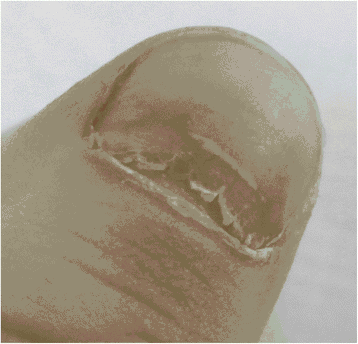
If you have been thinking about trying natural treatments for nail fungus but are unsure how to get started, you can consult your healthcare provider. They can advise you on the benefits and risks of various remedies. Remember not to self-treat as this could lead to more severe complications. It is best to visit a healthcare professional for treatment in most cases. Here are some tips:
A proper diagnosis is essential to find the best treatment for the condition. Fungus commonly affects the toes more than the fingers. The toes have a much lower level of blood circulation, so the immune system cannot detect the infection as readily as the fingers. A properly-diagnosed case of nail fungus can take months or even years to clear up. However, treatment is crucial as it is essential to get the Fungus under control as early as possible.
Coconut oil is another popular remedy for nail fungus. Coconut oil contains antibacterial properties and can treat Fungus while protecting the surrounding skin. This oil is a potent alternative to many conventional antifungal drugs and is available in most health food stores.
